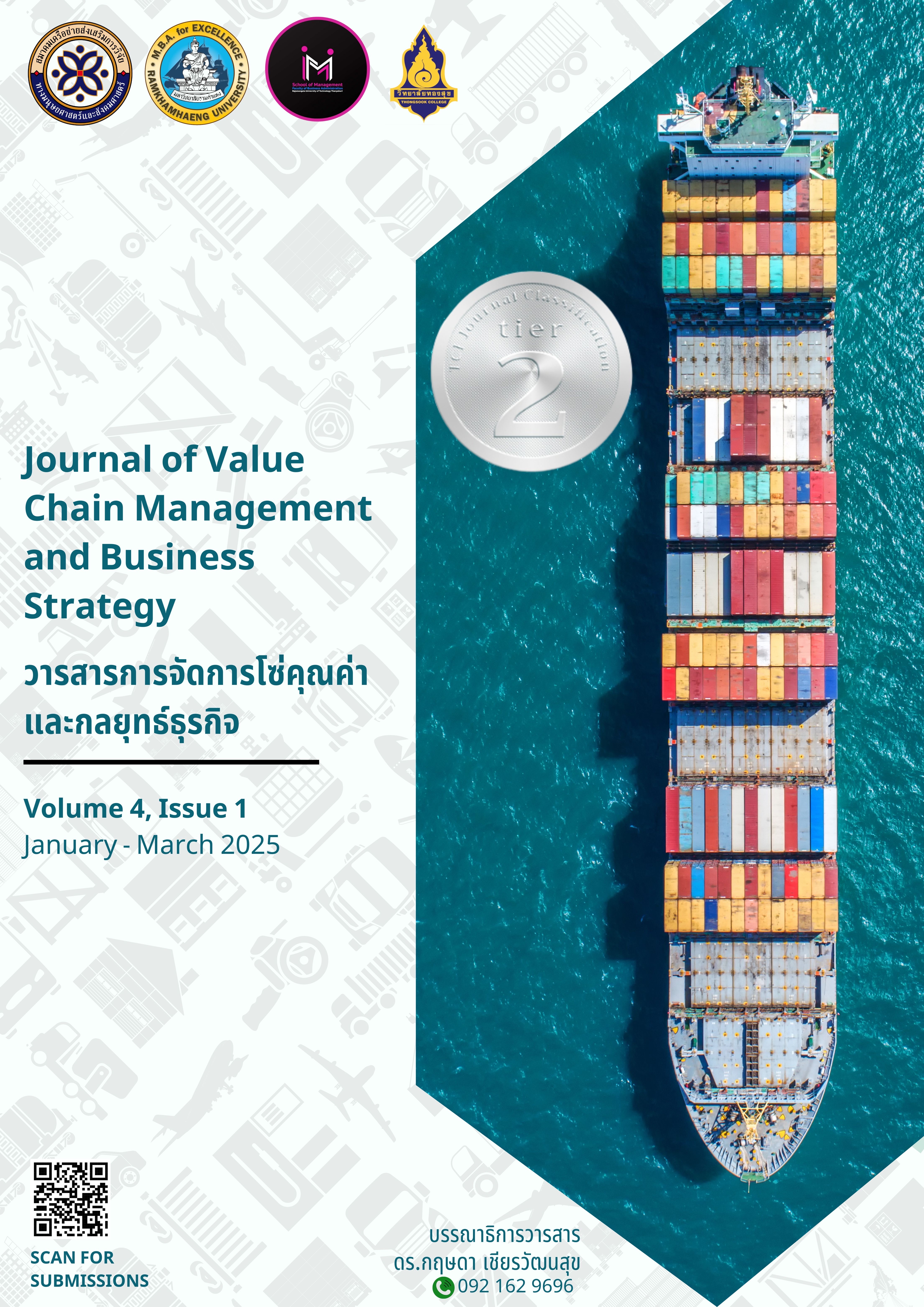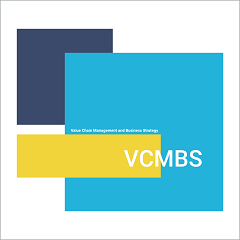ผลกระทบของการสนับสนุนจากองค์กรที่มีต่อความเป็นอิสระในการทำงาน และผลการปฏิบัติงานของพนักงานในสถานที่ทำงานแบบผสมผสาน
คำสำคัญ:
สถานที่ทำงานแบบผสมผสาน, ผลการปฏิบัติงานของพนักงาน, การสนับสนุนจากองค์กร, ความเป็นอิสระในการทำงานบทคัดย่อ
การวิจัยครั้งนี้มีวัตถุประสงค์เพื่อศึกษาผลกระทบของการสนับสนุนจากองค์กรที่มีต่อความเป็นอิสระในการทำงานและผลการปฏิบัติงานของพนักงานในสถานที่ทำงานแบบผสมผสาน การวิจัยเรื่องนี้เป็นการวิจัยเชิงปริมาณ ใช้วิธีการสำรวจโดยใช้แบบสอบถามเป็นเครื่องมือในการเก็บข้อมูล กลุ่มตัวอย่าง คือ พนักงานในองค์กรรัฐวิสาหกิจด้านพลังงานแห่งหนึ่งในกรุงเทพมหานคร ซึ่งมีการนำรูปแบบสถานที่ทำงานแบบผสมผสานมาใช้ จำนวน 275 คน สถิติเชิงพรรณนาที่ใช้ในการวิเคราะห์ข้อมูลเชิงปริมาณ ได้แก่ ค่าความถี่ ค่าร้อยละ ค่าเฉลี่ยและค่าส่วนเบี่ยงเบนมาตรฐาน สถิติเชิงอนุมานที่ใช้ในการทดสอบสมมติฐาน คือ ค่าสัมประสิทธิ์สหสัมพันธ์แบบเพียร์สัน และการวิเคราะห์ในรูปแบบของโมเดลสมการโครงสร้างแบบกำลังสองน้อยที่สุดบางส่วน (PLS-SEM)
ผลการวิจัย พบว่า การสนับสนุนจากองค์กรมีผลเชิงบวกต่อความเป็นอิสระในการทำงานและผลการปฏิบัติงานของพนักงานในสถานที่ทำงานแบบผสมผสานอย่างมีนัยสำคัญ นอกจากนี้ ความเป็นอิสระในการทำงานมีผลเชิงบวกต่อผลการปฏิบัติงานของพนักงานในสถานที่ทำงานแบบผสมผสานอย่างมีนัยสำคัญ และทำหน้าที่เป็นตัวแปรส่งผ่านบางส่วนในผลกระทบของการสนับสนุนจากองค์กรที่มีต่อผลการปฏิบัติงานของพนักงานในสถานที่ทำงานแบบผสมผสานอย่างมีนัยสำคัญ โดยมีค่าสัมประสิทธิ์การตัดสินใจ (R2) เท่ากับ 0.248 ผลการวิจัยชี้ให้เห็นถึงความสำคัญของการสนับสนุนจากองค์กร โดยเฉพาะด้านทรัพยากร เทคโนโลยี และนโยบายที่เอื้อต่อการทำงาน รวมไปถึงการส่งเสริมความเป็นอิสระในการปฏิบัติงานแก่พนักงาน ซึ่งส่งผลเชิงบวกต่อผลการปฏิบัติงานในสถานที่ทำงานแบบผสมผสาน ดังนั้น องค์กรควรให้ความสำคัญกับการสนับสนุนจากองค์กร และความเป็นอิสระในการทำงาน ในการวางแผนและกำหนดกลยุทธ์ที่เหมาะสมเพื่อตอบสนองความต้องการของพนักงาน ในสภาพแวดล้อมการทำงานที่เปลี่ยนแปลงไป
เอกสารอ้างอิง
ฐิรวัฒน์ สิทธิฤทธิ์. (2565). ความสัมพันธ์ระหว่างวัฒนธรรมองค์กรและสถานที่ทำงานรูปแบบ Hybrid workplace [วิทยานิพนธ์ปริญญามหาบัญฑิต ไม่ได้ตีพิมพ์]. มหาวิทยาลัยธรรมศาสตร์.
ปิยมาภรณ์ กู้กิตติไมตรี. (2561). ปัจจัยที่มีผลต่อคุณภาพชีวิตการทำงานและประสิทธิภาพในการปฏิบัติงาน กรณีศึกษา โรงงานผลิตอาหารแห่งหนึ่งในจังหวัดนครราชสีมา [สารนิพนธ์ปริญญามหาบัณฑิต ไม่ได้ตีพิมพ์]. มหาวิทยาลัยศรีปทุม.
Albreiki, J., Dhaiban, A., Alkatheeri, M., & Almansoori, N. B. (2023). The physical and mental effects of working in a hybrid work environment on an employee’s well-being and performance. In Proceedings of the 6th European Conference on Industrial Engineering and Operations Management (pp. 1157–1166). IEOM Society International, Lisbon, Portugal.
Bagozzi, R. P., & Yi, Y. (1988). On the evaluation of structural equation models. Journal of the Academy of Marketing Science, 16(1), 74-94. https://doi.org/10.1007/BF02723327
Bagozzi, R. P., & Yi, Y. (2012). Specification, evaluation, and interpretation of structural equation models. Journal of the Academy of Marketing Science, 40(1), 8-34. https://doi.org/10.1007/s11747-011-0278-x
Barken, R., Denton, M., Sayin, F. K., Brookman, C., Davies, S., & Zeytinoglu, I. U. (2018). The influence of autonomy on personal support workers’ job satisfaction, capacity to care, and intention to stay. Home Health Care Services Quarterly, 37(4), 294-312. https://doi.org/10.1080/01621424.2018.1493014
Baron, R. M., & Kenny, D. A. (1986). The moderator–mediator variable distinction in social psychological research: Conceptual, strategic, and statistical considerations. Journal of Personality and Social Psychology, 51(6), 1173–1182. https://doi.org/10.1037/0022-3514.51.6.1173
Behson, S. (2023). Making performance reviews fairer in a hybrid workplace. https://hbr.org
Chakraborty, S., Martin, L., MacDuff, K., & Nordal, V. (2022). Planning for optimal performance in the post-pandemic world: How to build a performance measurement framework given the new hybrid workplace, needs of employees, and skills analysis. Workforce Solutions Review, 2(2), 17-20.
Cherono, P., & Wanyoike, R. (2024). Influence of hybrid work culture on employee performance in selected county governments in Kenya. https://ssrn.com/ abstract =4871268
Chin, W. W. (1998). The partial least squares approach to structural equation modeling. Modern Methods for Business Research, 295(2), 295-336.
Collie, R. J., Granziera, H., & Martin, A. J. (2018). Teachers’ perceived autonomy support and adaptability: An investigation employing the job demands-resources model as relevant to workplace exhaustion, disengagement, and commitment. Teaching and Teacher Education, 74(2), 125-136. https://doi.org/10.1016/J.TATE.2018.04.015
Copnell, T., Leahy, D., Whalen, D., Ito, S., & Vandecruys, W. (2017). Driving corporate culture from the top. KPMG Board Leadership Centre.
Cronbach, L. J. (1970). Essentials of psychological testing. Harper & Row.
Fornell, C., & Larcker, D. F. (1981). Structural equation models with unobservable variables and measurement error: Algebra and statistics. Journal of Marketing Research, 18(3), 382-388. https://doi.org/10.2307/3150980
Garg, A. (2022). The future of work: A hybrid model. ANWESH: International Journal of Management and Information Technology, 7(2), 65-75. http://doi.org/10.4018/978-1-7998-8327-2.ch003
Hair, J. F., Ringle, C. M., & Sarstedt, M. (2013). Partial least squares structural equation modeling: Rigorous applications, better results and higher acceptance. Long Range Planning, 46(1-2), 1-12. https://doi.org/10.1016/j.lrp.2013.01.001
Jaß, L., Klußmann, A., Harth, V., & Mache, S. (2024). Job demands and resources perceived by hybrid working employees in German public administration: A qualitative study. Journal of Occupational Medicine and Toxicology, 19(1), 28. https://doi.org/10.1186/s12995-024-00426-5
Junaedy, T., Novriyadi, Damayanti, N., & Prasetya, A. B. (2022). The mediating role of work engagement and job autonomy in the relationship between transformational leadership, organizational support, and employee performance in mining companies in Indonesia. In Proceedings of the International Conference on Industrial Engineering and Operations Management (pp. 5373–5378). IEOM Society International, Istanbul, Turkey.
Kanat‐Maymon, Y., & Reizer, A. (2017). Supervisors’ autonomy support as a predictor of job performance trajectories. Applied Psychology: An International Review, 66(3), 468-486. https://doi.org/10.1111/apps.12094
Krejcie, R. V., & Morgan, D. W. (1970). Determining sample size for research activities. Educational and Psychological Measurement, 30(3), 607-610. https://doi.org/10.1177/001316447003000308
Liu, D., Zhang, S., Wang, L., & Lee, T. W. (2011). The effects of autonomy and empowerment on employee turnover: Test of a multilevel model in teams. Journal of Applied Psychology, 96(6), 1305-1316. https://doi.org/10.1037/a0024518
Malinowska, D., Tokarz, A., & Wardzichowska, A. (2018). Job autonomy in relation to work engagement and workaholism: Mediation of autonomous and controlled work motivation. International Journal of Occupational Medicine and Environmental Health, 31(4), 445-458. https://doi.org/10.13075/ijomeh.1896.01197
Naqshbandi, M. M. (2023). The future of work: Work engagement and job performance in the hybrid workplace. The Learning Organization, 31(1), 5-26. https://doi.org/10.1108/TLO-08-2022-0097
Naysmith, K., & Samuelsson, E. (2024). From home to the office and back: A study on motivation and performance in hybrid work spaces. School of Business, Society & Engineering, Mälardalen University.
Nie, T., Tian, M., Cai, M., & Yan, Q. (2023). Job autonomy and work meaning: Drivers of employee job-crafting behaviors in the VUCA times. Behavioral Sciences, 13(6), 493. http://doi.org/10.3390/bs13060493
Nie, Y., Chua, B. L., Yeung, A. S., Ryan, R. M., & Chan, W. Y. (2015). The importance of autonomy support and the mediating role of work motivation for well-being: Testing self‐determination theory in a Chinese work organisation. International Journal of Psychology, 50(4), 245-255. https://doi.org/10.1002/ijop.12110
Nyakio, M. R., & Madgalene, N. (2024). Hybrid work systems and employee performance in telecommunication firms in Kenya. International Journal of Social Sciences Management and Entrepreneurship, 8(3), 1221-1230.
Peprah, E. O. (2023). Hybrid workplace: Current status, positives, negatives, challenges, and team learning. The Learning Organization, 31(1), 88-103. https://doi.org/10.1108/tlo-11-2022-0150
Peterson, R. A. (2000). A meta-analysis of variance accounted for and factor loadings in exploratory factor analysis. Marketing Letters, 11(3), 261-275. https://doi.org/10.1023/A:1008191211004
Purba, S. D., Nilawati, L., Nugroho, Y. A. B., Budianto, E., & Geat, J. L. K. (2024). Unlocking work autonomy: A hybrid approach for sustainable job satisfaction in the post-covid era. JDM (Jurnal Dinamika Manajemen), 15(1), 133–148. https://doi.org/10.15294/jdm.v15i1.50277
Riggle, R. J., Edmondson, D. R., & Hansen, J. D. (2009). A meta-analysis of the relationship between perceived organizational support and job outcomes: 20 years of research. Journal of Business Research, 62(10), 1027-1030. https://doi.org/10.1016/j.jbusres.2008.05.003
Saleem, F., Malik, M. I., Qureshi, S. S., Farid, M. F., & Qamar, S. (2021). Technostress and employee performance nexus during COVID-19: Training and creative self-efficacy as moderators. Frontiers in Psychology, 12, 595119. https://doi.org/10.3389/fpsyg.2021.595119
Singh, G. H., & Joshi, A. (2022). Implementing a hybrid workplace model. International Journal of Research in Human Resource Management, 4(1), 99-105. https://doi.org/10.33545/26633213.2022.v4.i1b.99
Suárez-Albánchez, J., Jiménez-Estévez, P., Blázquez-Resino, J. J., & Gutiérrez-Broncano, S. (2022). Team autonomy and organizational support, well-being, and work engagement in the Spanish computer consultancy industry: The mediating effect of emotional intelligence. Administrative Sciences, 12(3), 85. https://doi.org/10.3390/admsci12030085
Theurer, C. P., Tumasjan, A., & Welpe, I. M. (2018). Contextual work design and employee innovative work behavior: When does autonomy matter?. PloS One, 13(10), e0204089. https://doi.org/10.1371/journal.pone.0204089
Tippins, M. J., & Sohi, R. S. (2003). IT competency and firm performance: Is organizational learning a missing link?. Strategic Management Journal, 24(8), 745–761. https://doi.org/10.1002/smj.337
Tisu, L., Vîrgă, D., & Mermeze, I. (2023). Autonomy and performance: Proactive vitality management and work engagement as sequential mediators of the relationship. Psychological Reports, 126(1), 411-433. https://doi.org/10.1177/00332941211048470
Verma, A., Venkatesan, M., Kumar, M., & Verma, J. (2022). The future of work post COVID-19: Key perceived HR implications of hybrid workplaces in India. Journal of Management Development, 42(1), 13–28. https://doi.org/10.1108/JMD-11-2021-0304
Zhu, J.-J., & Song, H.-M. (2022). The impact of career growth on knowledge-based employee engagement: The mediating role of affective commitment and the moderating role of perceived organizational support. Frontiers in Psychology, 13, 805208. https://doi.org/10.3389/fpsyg.2022.805208
ดาวน์โหลด
เผยแพร่แล้ว
รูปแบบการอ้างอิง
ฉบับ
ประเภทบทความ
สัญญาอนุญาต
ลิขสิทธิ์ (c) 2025 วารสารการจัดการโซ่คุณค่าและกลยุทธ์ธุรกิจ

อนุญาตภายใต้เงื่อนไข Creative Commons Attribution-NonCommercial-NoDerivatives 4.0 International License.




